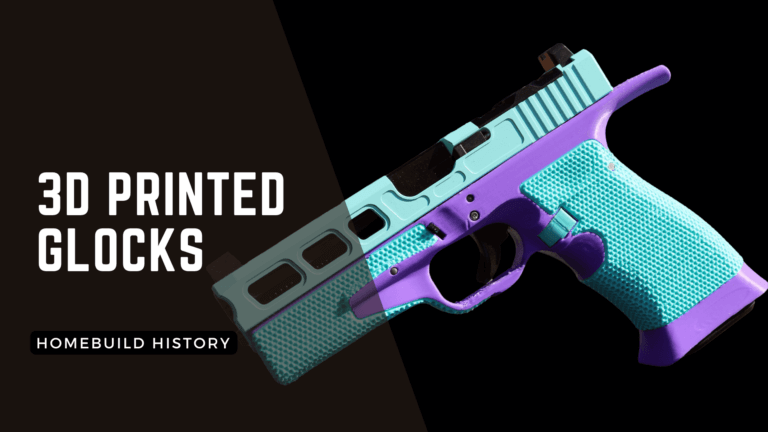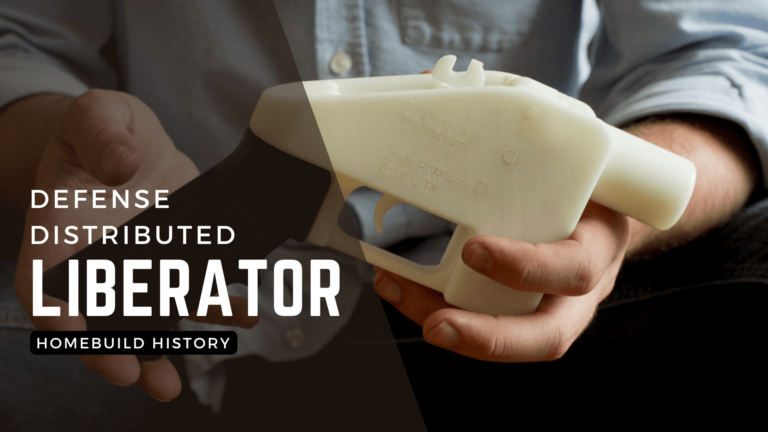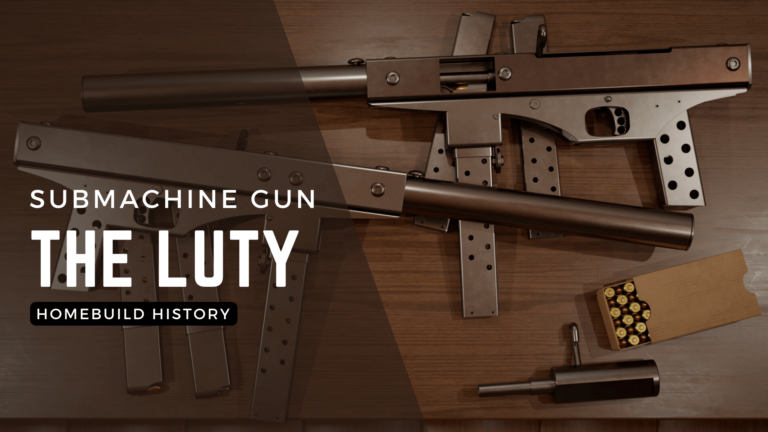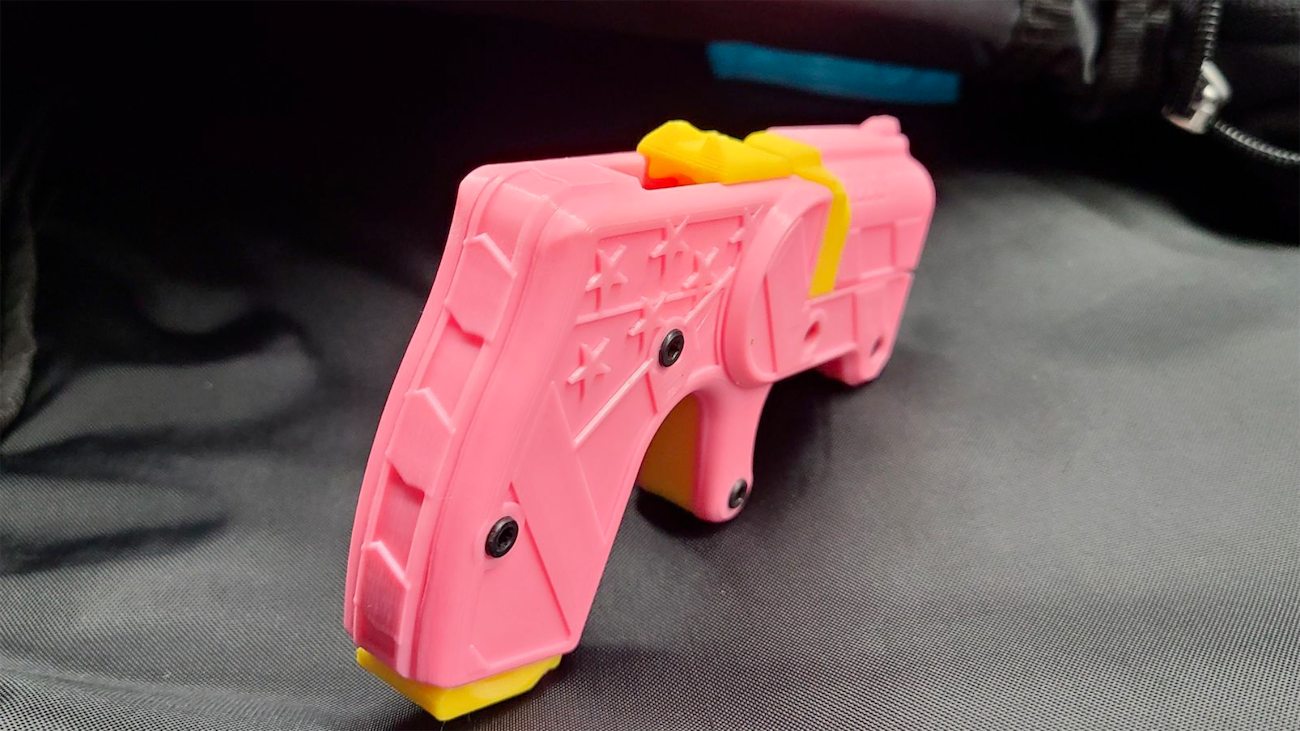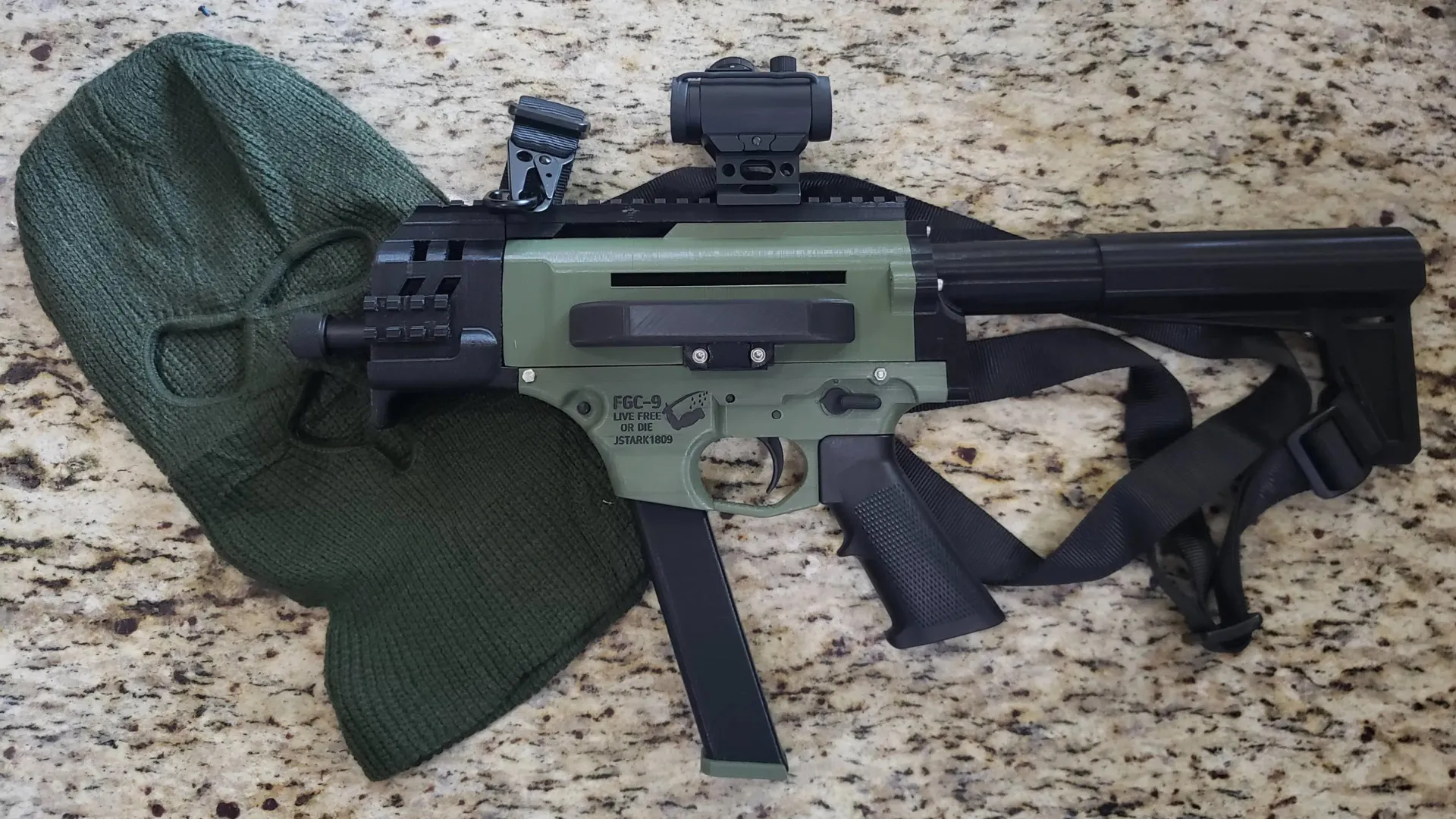Welcome to Homebuild History, the part of 3D Gun Builder’s website where we focus on the history of some of the most iconic homebuilt firearms, their contri butions to the world, and most importantly, how YOU AT HOME can get your hands on these classic arms and armaments!
What’s the Story?
This week, we’ll be discussing one of the most important series of homebuilt designs, and the pioneer in semiautomatic polymer homebuilds: the Shutys. Their impact on the numerous designs that’ve been made since cannot be underestimated, even if they aren’t as impactful as they used to be.


Accounting to Win
Darren Booth is a West Virginian man known for many things. Some would say carpentry. Others would say his history as an accountant. Publicly, though, he’s known as Derwood, a pioneer from the early days of FOSSCAD who created a gun unlike anything else.
At the time, single-shot designs like the Liberator and the rare multi-shot gun like the Reppringer were the only things most people believed a printer could make. While semiauto AR-15 lowers had been made, they were only one part of a bigger gun. Derwood desired to change that, and thus began work on the Shuty.
Initially built off an AR-15 lower, the Shuty, named after the Luty submachine gun, was the first and at the time only design in its class. Other semiauto designs were immature and unsuccessful. Even though it had many custom parts like the magazine, the Shuty was the first semiauto 3D printed gun to be proven to work.

Derwood created multiple generations of Shuty. The v2 became the v5, and the v5 eventually became the MP-1, getting rid of the AR-15 buffer tube. The receiver itself became less and less AR-based, though it kept the fire control group and grip. Even as it matured, there were few if any real competitors.
The AR buffer tube would make a return in the next big iteration: the AP-9. Known in some places as the “Gluty,” this was the apex of the design for a few years. While bringing back the buffer tube, it incorporated a new ejector and, most critically, a change to Glock magazines.
The AP-9 would inspire numerous future PCC designs to use the Glock magazine, but none moreso than the FGC-9. Though Derwood was not the most apt at making models that were easy to print, JStark took the design and refined it from partial to total DIY creation, making the legendary homebuild and cementing himself in history.
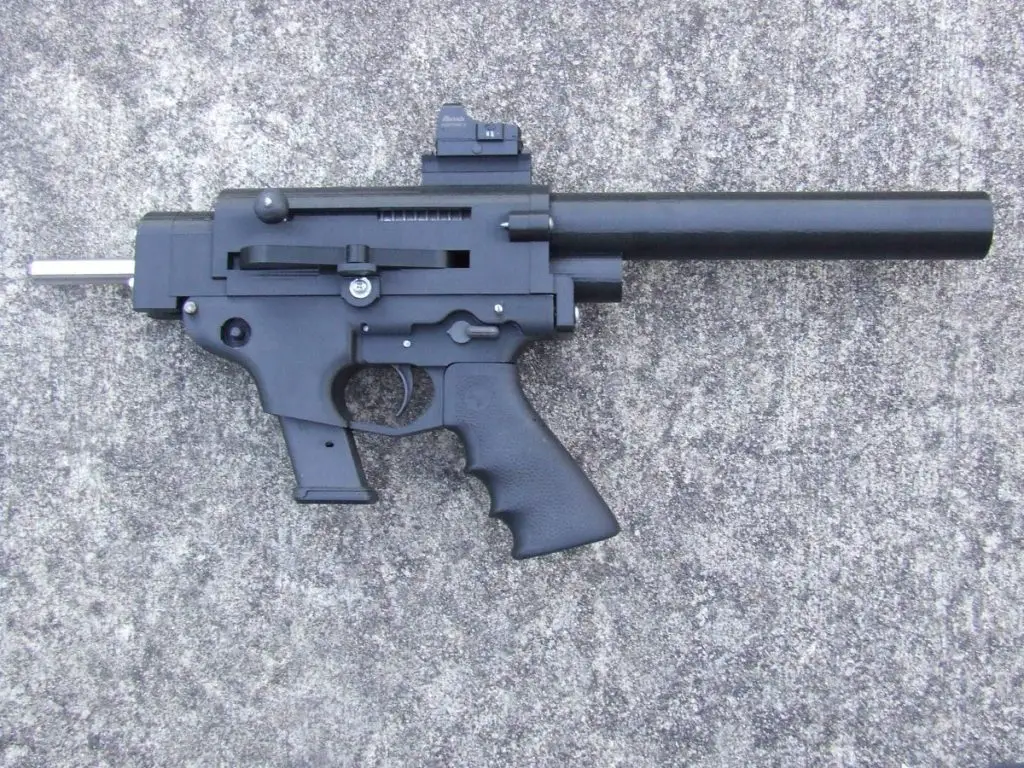
Rags to Riches?
Derwood disappeared from the guncad community for some time. When he returned, the Shuty series had further evolved with a new addition: the WTF-9. Like the MP-1 before it, the WTF-9 had managed to divest itself of the AR buffer tube.
Arguments with members of Deterrence Dispensed over the inspiration of and credit given over the FGC-9 saw Derwood make a move. He met and began to work with former Iraqi PMC owner and gun designer Mustafa “Mussy” Khudairi. The two worked to revise the WTF-9 design in concert with yours truly, and thus the MOD9 was born.
Pitched as the first gun to transition from 3D printed prototype to retail sales, the MOD9 was advertised as a highly adaptable PCC. It was highly adaptable, with variable magazine wells, fore-ends, stocks, braces, and almost everything else. However, unfortunate circumstances prevented its retail release.
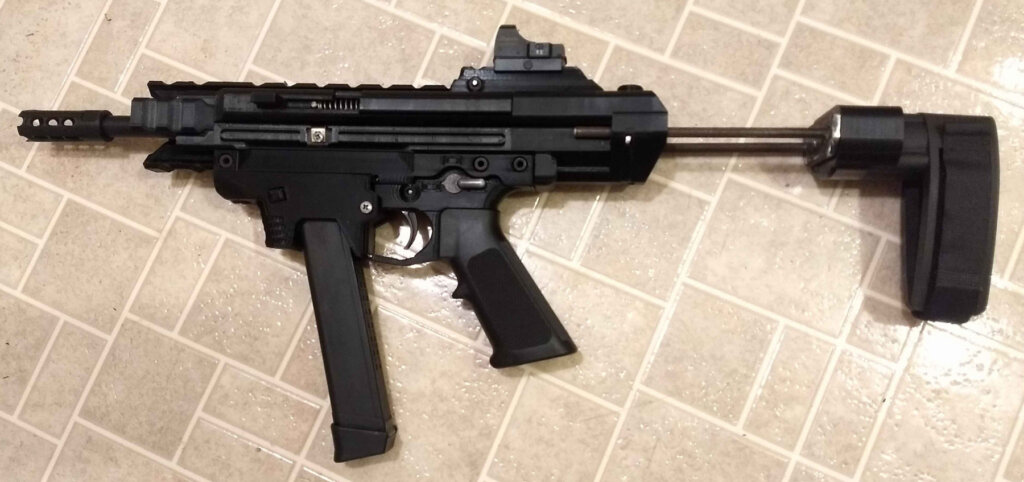
The design was further evolved despite this into the KC9 and RTT-9. Both designed introduced an attempt by Derwood to use magnets as a means of delaying the bolt. Unfortunately, bad marketing impacted the later Shuty examples, and they were never a commercial success.
Derwood’s eventual leaving the guncad community over criticism of the RTT-9 closed the door on the Shuty series. Despite this, the line’s successes have been evident. It was featured on VICE News back when there was a shred of real journalism there. The KC9, magnets or not, is still considered a decent shooting gun.
The possibility further derivatives from the community of the design still lingers. Maybe one day, a new Shuty variant will emerge, Derwood designed or not, and dazzle the world of printers yet again.
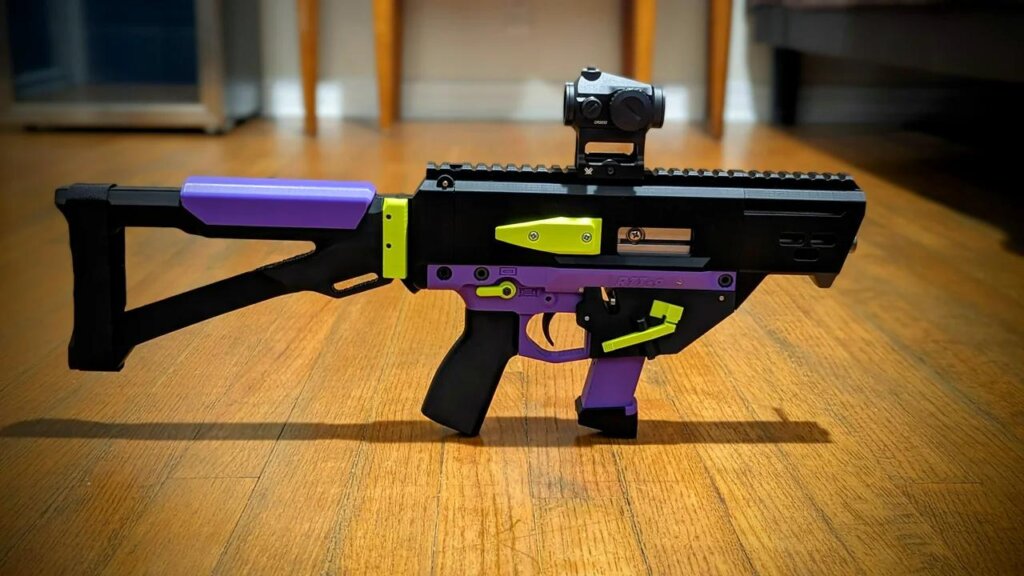
How do I make it?
Files for the Shuty variants are harder to come by the newer they get. The earlier models were included in the DEFCAD and FOSSCAD repos. The AP-9 and MP-1 among others can be found there too. The MOD9 is trickier – it’s found in the print2a repo.
The KC9 and RTT-9 files are easy enough to find, but the bolt assemblies are not. Derwood decided to monetize the parts kits for both and as a result, building* one of them will take a good bit of guesswork.
For the closest feel to a KC9 or RTT-9 as a full DIY project, we recommend either the MOD9 v3 or v4. With many aftermarket variations, the design is as adaptable as it was intended to be for the market. The use of primarily Glock barrels and magazines as well as AR-15 fire control groups and grips makes for ease of change.
As always, tune in next week for more Homebuild History! Stay safe and build on!
*Legally, of course. Laws don’t stop you from building this, but we at 3DGunBuilder encourage readers to follow all legal guidelines. If you can’t make this in your state or country, please don’t try to. Just remember that this is here for educational and research purposes only.



